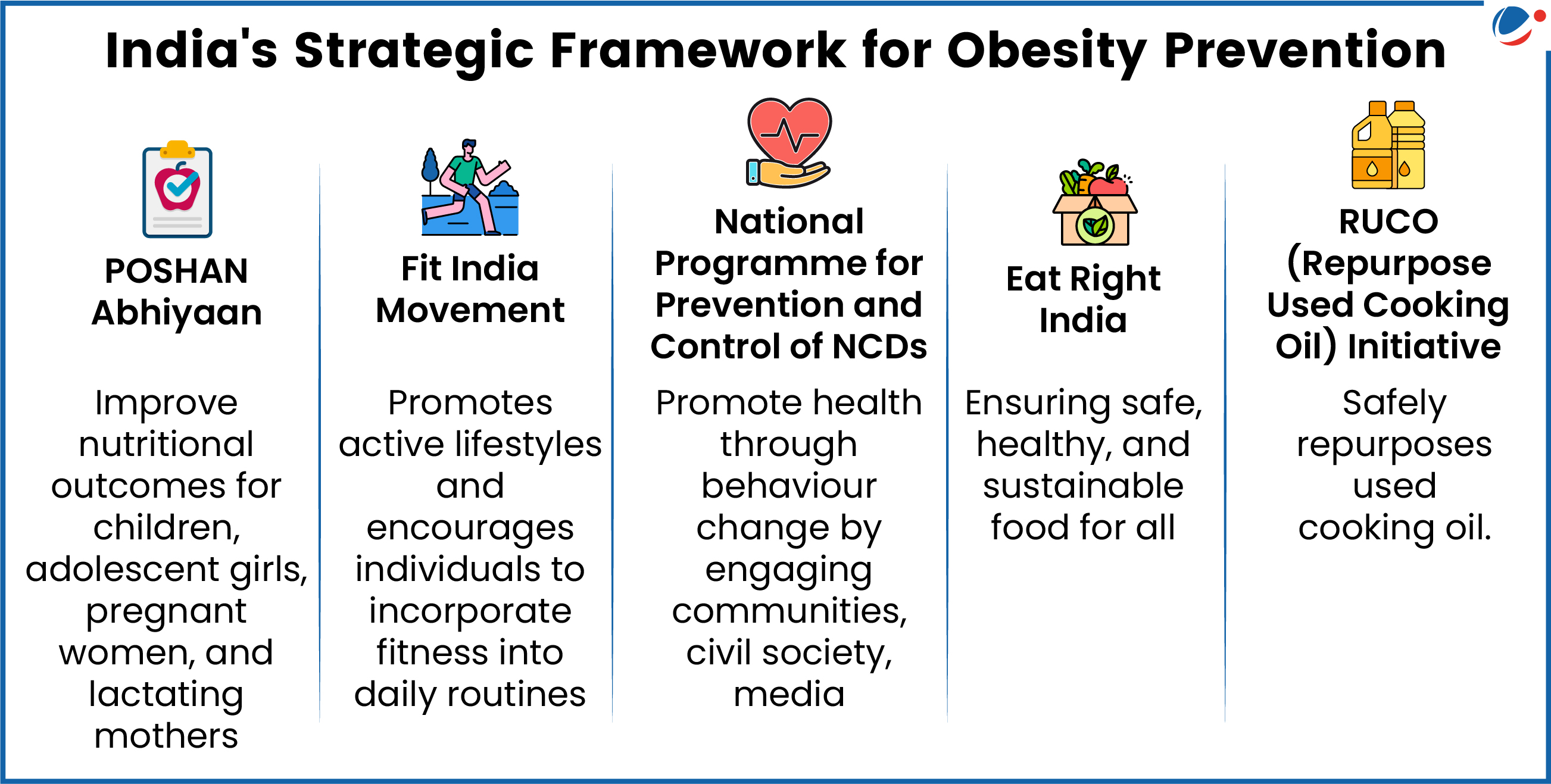Recently Prime Minister stated that in 2022, one in eight people globally is living with obesity with cases among children and adolescents (5 to 19 years) has quadrupled.
About Obesity
- Defined as an abnormal or excessive fat accumulation that presents a risk to health (World Health Organization).
- Body Mass Index (BMI) is used to classify obesity. It is calculated by dividing a person's weight in kilograms by their height in meters squared (kg/m²).
- BMI of 25 or above is considered overweight and 30 or above is classified as obese.
- Health Consequences: Rising cardiovascular diseases, diabetes, cancers, neurological disorders, chronic respiratory diseases, etc.
Status of obesity in India as per NFHS-5 (2019-2021)
- Overall, 24% of women and 23% of men are overweight or obese.
- At all India level, Child (under 5 years) overweight rates increased from 2.1% to 3.4% between 2015-16 and 2019-21.
Factors Driving obesity in India
- High-Calorie, Low-Nutrient Diets: Increased consumption of refined carbohydrates, saturated fats and easy access to processed foods.
- Sedentary Lifestyles: Long sitting hours, excessive screen time, minimal movement in daily routines etc.
- Use of Genetically modified crops: Altered food composition, impacting metabolism and weight gain.




